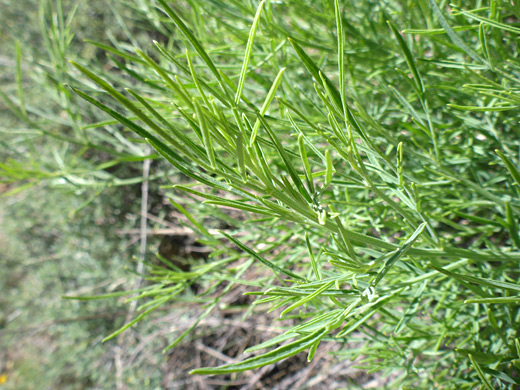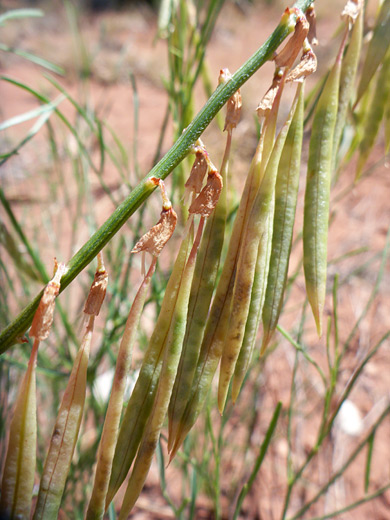Common names:
Rushy milkvetch, long-pod milkvetch
Family:
Scientific name:
Astragalus lonchocarpus
Main flower color:
Range:
East Nevada, Utah, south and west Colorado, north New Mexico and north Arizona
Height:
Up to 2 feet
Habitat:
Woodland margins, canyons, plains; generally in semi-desert areas
Leaves:
Alternate, divided into long, narrow, linear lobes
Season:
May to June
Astragalus lonchocarpus, a perennial, occurs in a broad band from central Utah, across southwest Colorado to northern New Mexico, plus lesser occurrences in eastern Nevada.
Leaves are finely divided into narrow, well-separated leaflets, often folded along the midvein. Plants produce many stems, resulting in dense foliage. Stems are grooved, and covered with a fine pubescence.
Flowers are attached by short, hairy stalks, in an alternate arrangement, and they generally point downwards. The tubular, fairly narrow calyces are pale green to nearly white, also finely pubescent; they have five small lobes at the tip, curved outwards. Corollas are white to creamy-yellow; the banner petal is curved upwards along all edges and bent back approximately at a right angle. The two wing petals are unusually long and thin, projecting some distance beyond the keel petal. Fruits are linear, greenish pods, narrow at either end, hanging downwards.
Leaves are finely divided into narrow, well-separated leaflets, often folded along the midvein. Plants produce many stems, resulting in dense foliage. Stems are grooved, and covered with a fine pubescence.
Flowers are attached by short, hairy stalks, in an alternate arrangement, and they generally point downwards. The tubular, fairly narrow calyces are pale green to nearly white, also finely pubescent; they have five small lobes at the tip, curved outwards. Corollas are white to creamy-yellow; the banner petal is curved upwards along all edges and bent back approximately at a right angle. The two wing petals are unusually long and thin, projecting some distance beyond the keel petal. Fruits are linear, greenish pods, narrow at either end, hanging downwards.
All Contents © Copyright The American Southwest | Comments and Questions | Contribute | Site Map





